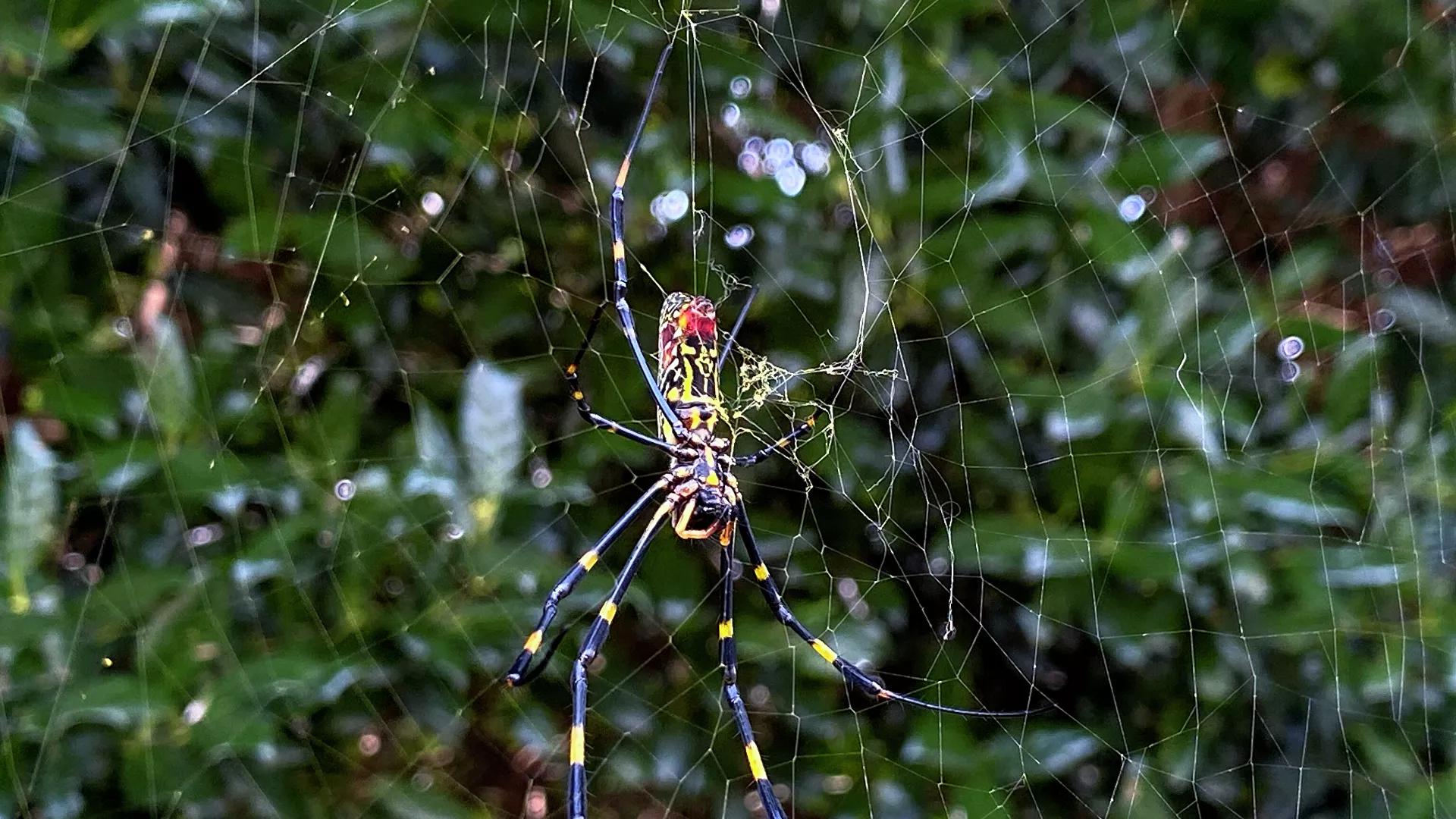Africa-Press – Sierra-Leone. Despite a frightening appearance and unsettling size, the spider is unlikely to cause significant disruption to local ecosystems or harm to humans in the US.
A large spider from East Asia that first infested the US state of Georgia will soon be seen throughout the entire eastern coast of the United States, new research published in the journal Physiological Entomology has reported.
Trichonephila clavata,
known as the Joro spider, has legs that span seven centimeters (three inches) and are nearly the size of a human palm. The big spider has in recent years alarmed Georgia residents who come across its massive golden webs. In addition to its enormous size (female members of the species are as large or larger than the Carolina wolf spider, the largest natural spider in the US), the yellow and blue color scheme of the creature is striking.
According to research, the spider, primarily confined to warmer southeastern US states for nearly a decade, could soon be expected to colonize cooler climates, as researchers noted that the giant arachnids have a higher chance of surviving a brief freeze than other species in the same genus.
Another researcher, Benjamin Frick, added that “there’s no point in excess cruelty where it’s not needed.” The study compared the Joro spider to a relative, the golden silk spider, which arrived from the tropics to the country’s Southeast roughly 160 years ago. Due to its cold sensitivity, the golden silk spider has been unable to move beyond the region, according to the paper.
Researchers said they used iNaturalist information to track spider sightings across Georgia throughout the year. The National Geographic Society and the California Academy of Sciences have teamed up to produce iNaturalist, which maps user reports of many animals to create location data on a range of species. They also measured the arachnids’ metabolic, cardiac, and survival rates during a brief freeze in order to document the species’ cold resistance.
Despite their similarities, the Joro spider has almost twice the metabolism of its relative, a 77% greater heart rate, and can survive a brief cold that would kill many of its relatives, according to the study. Additionally, in a cold climate, the Joro spider’s body performs better than its relatives.
Joros can also use their silk to fly with the wind to other locations, a technique known as ballooning,
researchers pointed out. It’s one of the reasons Joros have been able to expand so quickly throughout Georgia. When hatchlings emerge in the spring, they travel to a new location using ballooning. The following year, their offspring do the same.
The spiders, native to Korea, China, Taiwan, and Japan, are thought to have arrived in Georgia around 2013 or 2014, when sightings were first reported. The spiders most likely traveled to Georgia on a cargo ship, according to researchers. They are able to breed quickly because they have no natural enemies, eventually blanketing the state with golden webs.
This arachnid draws its name from the Japanese mythological character Jorogumo, an archetypal femme fatale who transforms into a beautiful woman to prey on unwary males.
Joro spiders are mostly harmless to humans and most pets.
According to scientists, the creature’s bite feels like a small pinch, and while it is poisonous, it poses no hazard to a human who is bitten.
“There’s really no reason to go around actively squishing them,” Frick underscored. “Humans are at the root of their invasion. Don’t blame the Joro spider.”
For More News And Analysis About Sierra-Leone Follow Africa-Press






